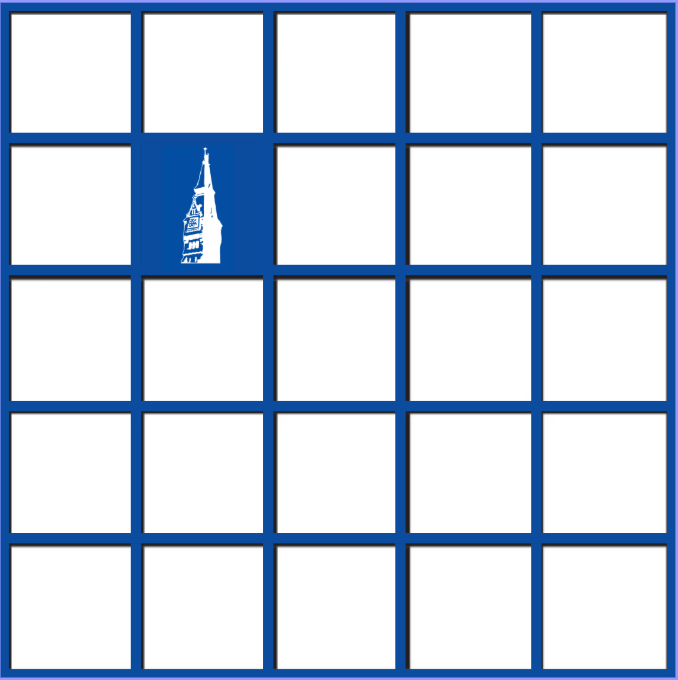The Korean peninsula is one of the most remarkable places on earth, but it is also one of the least discussed, except when Kim Jong-il is portrayed as a diabolical puppet in film or when his regime conducts a nuclear test. Considering our shared history, it is rather striking that Americans seem to know and think so little about Korea.
In early September 2001, I was in a formation at Fort Huachuca, Ariz. A drill sergeant yelled out my name:
“Quinn, what language are you hoping for?”
“Chinese or Arabic,” I replied.
The drill sergeant grinned. “Well, you got Korean. Congratulations!” Everyone laughed.
A month later, I began studying Korean. I knew very little of Korea at the time. The Korean War is sometimes called “the Forgotten War,” and for good reason. It took place between World War II and Vietnam, in a decade remembered for being filled with optimism and joy. But the 1950s were anything but peaceful. The Cold War had sparked a nuclear arms race between the United States and the Union of Soviet Socialist Republics, and the two countries were competing globally for the support of the rest of the world. Korea was a central battleground. In three years, the United States lost more than 36,500 servicemen (compare that to the 16 years of the Vietnam War, during which the United States lost 58,209 servicemen). More than 8,000 more were missing in action. North and South Korean forces suffered over two million casualties. In a war that was fought on almost every square kilometer of the country, civilians suffered the most. The exact number of Korean civilian casualties is unknown, but estimates range from two to three million.
In March 2003, I visited the demilitarized zone between North and South Korea for the first time. It is a 248-kilometer long, four-kilometer wide no man’s land – the most heavily fortified border in the world. Standing there, looking toward North Korea, one becomes instantly aware of how capable humans are of massive destruction. It has the perpetual feeling of the moment before a storm, of those minutes before an anticipated battle, when everyone thinks of the future with dread.
We conducted battle drills in the enormous expanse of military-controlled land that serves as a buffer between the DMZ and South Korea’s civilian population. It felt a little silly. If war did break out, we all expected to be blown to smithereens. But since no one could actually fathom that kind of destruction, we acted as though we were ignorant of the rockets and guns that had us in their sights. Having experienced combat against the insurgency in Iraq, I still cannot fathom combat in Korea. No threat currently being discussed in the Pentagon’s conference rooms frightens me more than an escalation of the Korean conflict. But the Army has other threats to consider. In 2004, a brigade from the Second Infantry Division was sent to Iraq, and it never returned to Korea.
Back in 2003, we still heard the music and shouting of propaganda coming from the loudspeakers placed by the two Koreas. Since then, they have been silenced by politics. South Korea has tried to keep North Korea from becoming a failed state, and therefore a dangerous anarchy, by increasing dialogue with Kim Jong-il’s government. The continuation of the Korean War, anticipated for five decades, may never happen. On Oct. 4, 2007, the two Koreas signed an agreement to pursue peace.
While tension between North Korea and the world seems to rise with the advent of its nuclear weapons program, it is not a tension that is evident in South Korea. Even the South Korean people are less fearful of North Korea’s military than they were in the past. A booming economy and a strong middle class lend to a sense of complacency, but so too does the strange silence of the drums of war. The clash of ideologies and hopes that caused apprehension in the hearts and minds of South Koreans for over 50 years has now become largely ignored. This is true despite the ubiquitous Army checkpoints, the bomb shelters, the guard posts along the coastline and the enormous concrete barricades placed above roads, to be collapsed in the event of a retreat.
The ability of South Korean civilians to forget the enormous threat of war is understandable when one considers their history. Four decades ago, South Korea was among the poorest nations on earth (think sub-Saharan Africa). In 2004, its gross domestic product reached the trillion dollar mark. It is the fifth-largest producer of automobiles and has one of the most competitive IT industries in the world. It achieved this despite one of the world’s largest armies swearing to destroy it.
eanwhile, in North Korea, life continues to look bleak. Its economy grew rapidly after the Korean War and was stronger than South Korea’s until the late 1970s. Since then, it has slowly deteriorated. The collapse of the Soviet bloc coincided with a fertilizer shortage and a series of natural disasters in North Korea, causing a famine from 1995 to 2001 during which nearly two million people died. But the human suffering is not merely accidental. As with most totalitarian regimes, dissent is not tolerated. Kim Jong-il’s government is intensely paranoid and uses concentration camps to deal with political prisoners.
Here at Georgetown, most people seem to think the way I did in 2001. Korean is not nearly as popular a language as Chinese or Arabic. Despite South Korea’s resilient economy, the diplomatic and military challenges posed by North Korea, and the strong military alliance between the United States and South Korea, very few people are lining up to understand it better. Perhaps Korea is forgotten for being between China and Japan, just as the Korean War is forgotten for being between World War II and Vietnam. Whatever the cause, more people should take notice, if only to understand what it is that has made that peninsula so incredibly dynamic.
William Quinn is a sophomore in the School of Foreign Service and a former staff sergeant in the United States Army. He can be reached at quinnthehoya.com AIMLESS FEET appears every other Tuesday.
“






